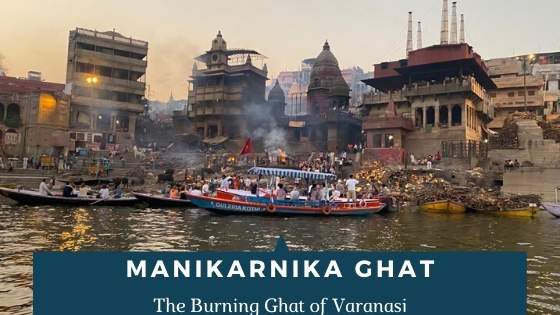- Use promo code "CPT10" & get 10% off on tours
- traveldesk@cityonpedals.com
A60E15 – Phulkari | #Amritsar60

“Phulkari Tere Sirr Di Shaan Ni Punjabane”
The Pride of a Punjabi Women, the Floral Heritage of Punjab, synonymous to Punjab’s culture, Phulkari literally means a floral work where the entire cloth is filled with flowery embroidery. Yes, we have talked much of patriotism, religion, and food in our previous episodes of the Amritsar 60 series. So now is the time to make our world travelers familiar with the rich culture of the land and what would be the best to dedicate our first episode in this genre to the world-famous Phulkari.
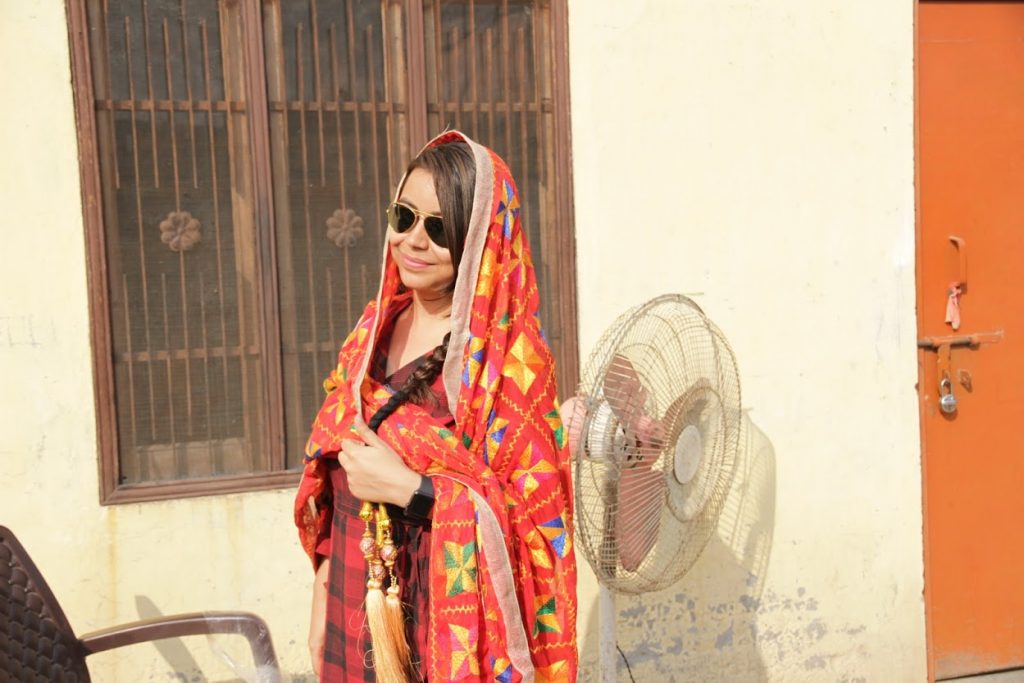
What Is Phulkari?
Ideally, Phulkari means the shape of flowers that symbolizes life. Made up of two words “Phul” and “Akari” that means “flower” and “shape” respectively. The birth of a girl child in a Punjabi family is considered as auspicious. They are treated as the princess of the family and the creators of future generations. Out of love and happiness on the birth of a girl-child, the mother and grandmothers would start embroidering beautiful and attractive Phulkari dupattas for her. Originally Phulkari was done with real flowers and leaves on either Silk and Mulmul (soft cotton muslin) fabrics because of their purity and longevity. Normally the embroidery is done from the reverse side of the cloth. It was believed that the virtue and character of a woman who is weaving Phulkari give actual shape to it. There are various folk songs indicative of this attachment of the girl with her mother or grandmother or aunt doing this for her.
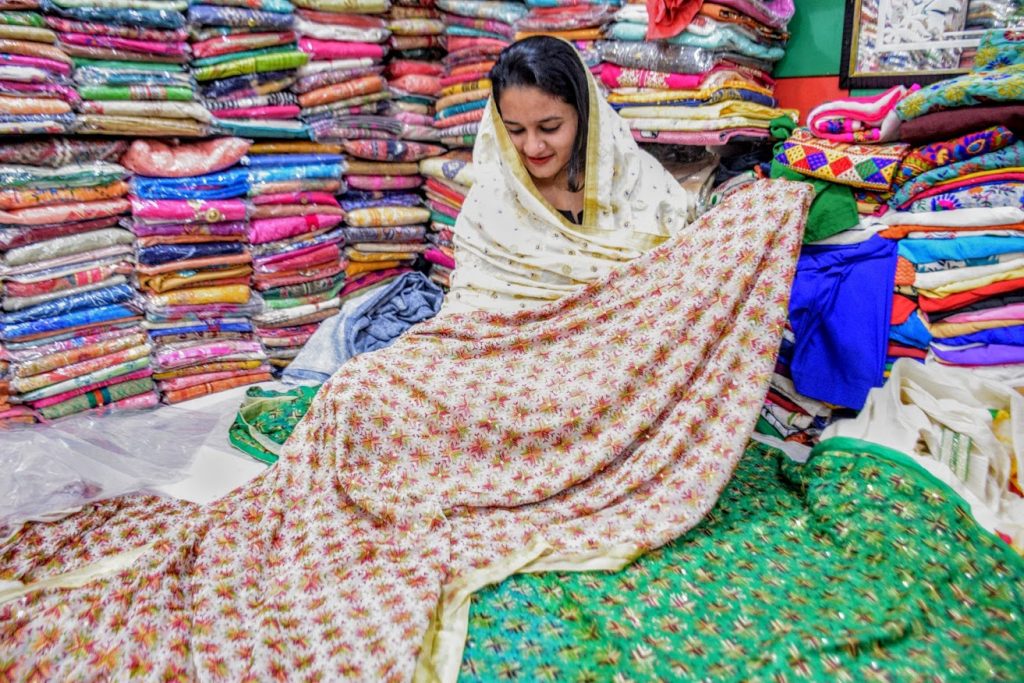
“Eh Phulkari Meri Maan Ne Kadhi;
Is Noo Ghut Ghut Japhiyan Paawan”
— (This Phulkari was embroidered by my mother, I embrace it warmly).
Origin Of Phulkari
These are commonly referred to as the simple and sparsely used head scarfs – Odinis, dupatta, and shawls made for everyday use. Intricately designed and beautifully embroidered at homes in multiple colors, these forms an integral part of a Punjabi girl’s trousseau. The first-ever reference of the word was cited in Punjabi Literature in the 18th century where Waris Shah – a renowned Punjabi poet, has described the trousseau of Heer and lists various articles of clothing with Phulkari among them.
If we talk about history, there are different theories and perceptions about the origin of Phulkari. Some believe that embroidery has always been a prevalent part of the country since the 7th Century CE, but it survived only in Punjab. that is the reason that a similar kind of embroidery can be seen in Bihar and Rajasthan. Others believe that this floral embroidery has originated from Iran, where it was called “Gulkari“ that literally means “patterns of flowers”.

As also discussed earlier, Phulkari was primarily an artistic product that was limited to the household and was initially done by the women on a hand-spun fabric called Khaddar – a hand-loomed plain weaved cotton fabric. The patent embroidery or patterns of Phulkari are done by using long and short darn stitches on the backside of the fabric. This art was so unique at that time that neither women use to trace designs on fabric nor this technique or patterns were documented anywhere. Everything was learned, crafted and excelled just by the word of mouth. There were no special training schools for this. Whatever art was learned by the young girls it was only through their mothers, grandmothers or aunts only as this was considered as the most important and non-separable art of a girl’s life.
The Use Of Thread
The threads used for embroidery were soft untwisted silk floss called Patt. This thread is usually imported from Kashmir, Afghanistan, and Bengal which is then dyed here by the dyers called Lalaris. However, the best quality thread is obtained from China and the women in villages obtain it from hawkers or street vendors that usually come to sell the products of daily use.
Authentic Colors And Motifs Of Phulkari
Since Phulkari is basically the pride of a married woman which is usually associated more with red color because of the auspiciousness attached to it for both Hindus and Sikhs, so the color red has an important place in the embroidery. Other than this the hues like yellow, blue, orange, etc also used extensively in curating a beautiful Phulkari dupattas.
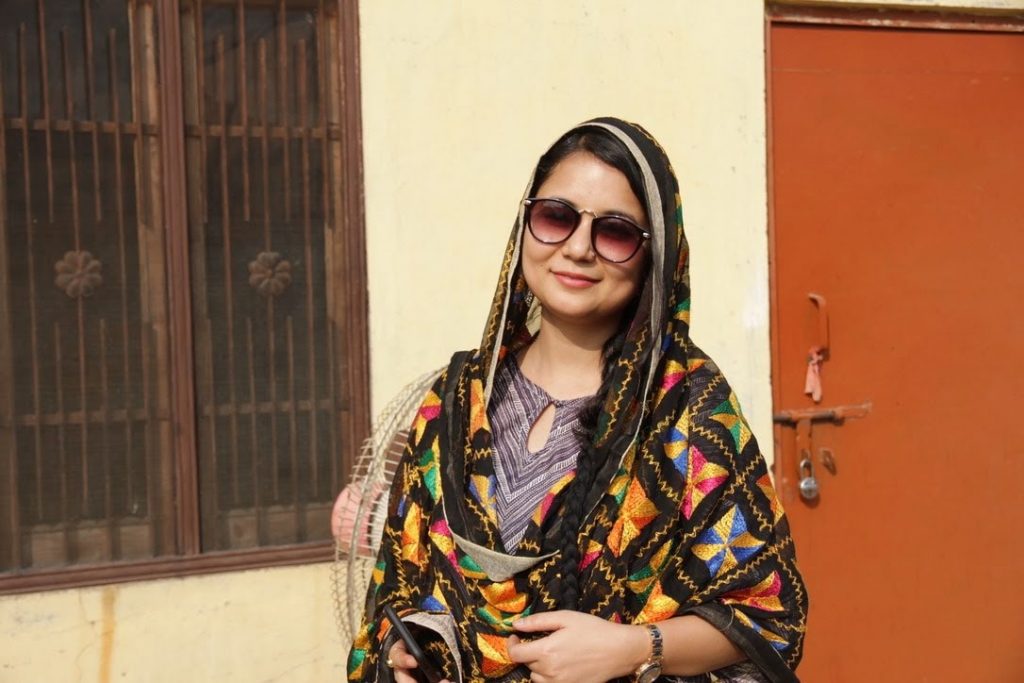
Everyday scenes from the village are well depicted through various motifs and colors of the embroidery. Animals and birds motifs are used to depict the success, pride, beauty, and goodwill whereas different motifs of fruits symbolize wealth, prosperity, and fertility. Some of the motifs are also inspired by crops but never-ever any religious subject is taken up as a pattern in curating theses pieces of art.
Types Of Phulkari
Different Phulkari designs are reserved for different occasions. While Chope is a gift from the maternal uncle to the bride, the Wari da Bagh represents happiness. Similarly, Chamba, Suber and Ghunghat Bagh all have a specific meaning and value attached. Pachranga and Satranga varieties are available in each of these types, which, basically means that the needlework used on most Phulkari works makes use of five or seven different colors of threads.
Various types of Phulkari in India

- Thirma: Symbol of purity, worn by elder women & widows, but at times, the choice of white is made for esthetical reasons.
- Darshan Dwar: Made for a temple as an offering to thank god after a wish has been fulfilled.
- Bawan Bagh: Mosaic of fiftytwo different patterns that decorate the piece and is the rarest of all.
- VaridaBagh: Made on an orange-reddish khaddar with the main pattern being a group of three four small concentric lozenges (diamond) of growing size.
- Chope: Embroidered with one color, usually on the borders.
- Surajmukhi: Sunflower refers to the main pattern of this Phulkari.
- Kaudi Bagh: Chains of small white squares representing stylized cowries.
- Panchranga: Decorated with chevrons of five different colors.
- Satranga: Decorated with chevrons of seven different colors.
- Meenakari: Made of gold and white-colored pat, is decorated with small multicolored lozenges referring to enamel work (meenakari)
Rise Of The Art
Nowadays this art is so much popular worldwide that you will find Phulkari in foreign land as well. If you visit on your tour to the old city of Amritsar, you will find Phulkari everywhere. Every vendor of the old market place sells Phulkari these days. So the best place to shop is the inside area of Katra Jaimal Singh near the Heritage Walk from where you will get a variety of stuff like Dupattas, Shawls, Suits, Lehengas, etc.
Increasing demand for this fabric from various parts of the globe has been the major reason for change that the tradition of Phulkari has witnessed. Having bagged a contemporary label, the Phulkari today is a lot different. For example, no longer is the darn embroidered on the wrong side of the cloth. Mechanical labor has been put into it rather than detailed handwork, which is been done by the industry owing to the bulk demand of the embroidered fabrics. Likewise, Khaddar is being replaced by a variety of other fabrics such as chiffon, georgette, cotton, etc. New designs for outfits are being established by several modern designers to reach out to the new segments of customers. But that does not mean that the machine work has made the quality of this fine art any lower instead, new markets have opened up popularizing it, making it available to masses.
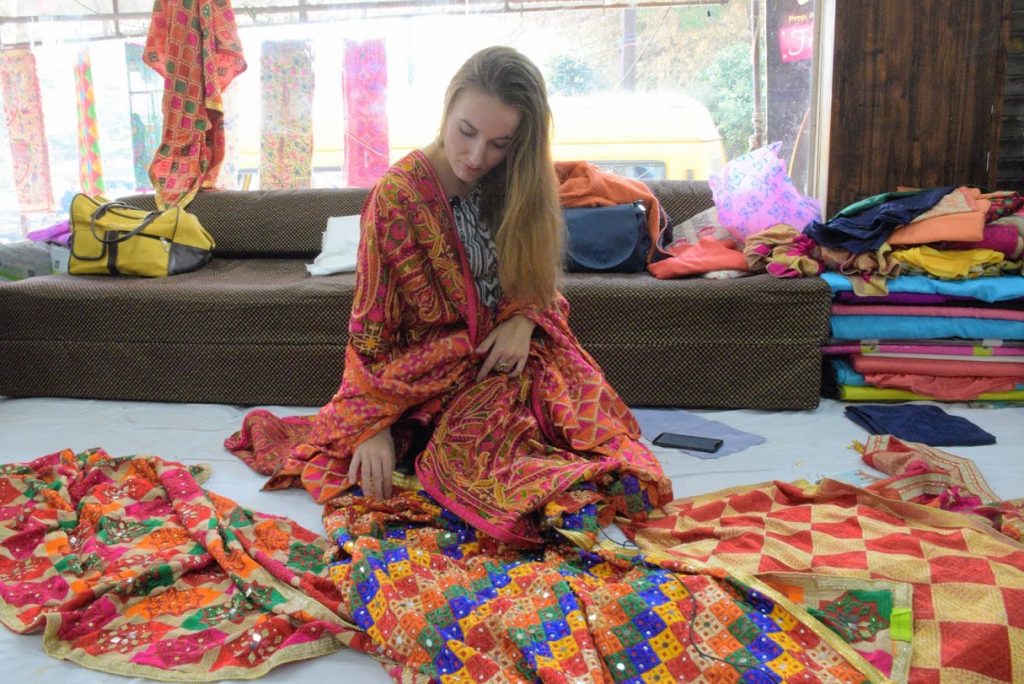
We firmly believe that what you wear is how you present yourself to the world, especially today, when human contacts are so quick. Fashion is an instant language. The style rates quite high on the global wearability factor even for this traditional attire today. The fashionistas know perfectly how to customize the perfect Phulkari for a perfect occasion. A tradition that has started with just a time-pass of the females in the age gone-by has now seen so much change that it has not stuck to only Odinis and full-length suits. Rather very soon we will see it being used as curtains and as an essential part of the interiors industry. The rural crafts industry could see Phulkari developing as a trend in designing handicrafts and ornaments as well.
It would be apt to say that Phulkari is a classic style even today which will never fade away. Because “Fashions fades away but style is eternal”.

